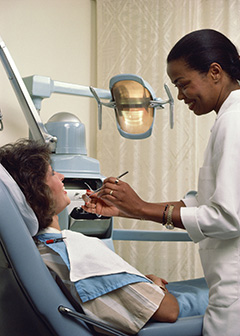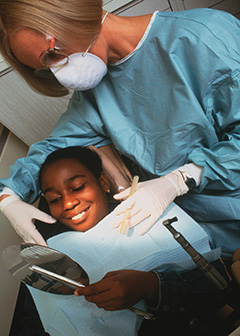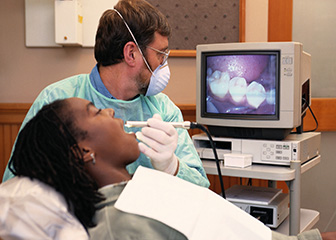Summary

| Quick Facts: Dental Hygienists | |
|---|---|
|
$68,250 per year
$32.81 per hour |
|
| Associate’s degree | |
| None | |
| None | |
| 181,800 | |
| 38% (Much faster than average) | |
| 68,500 | |
What Dental Hygienists Do
Dental hygienists clean teeth, examine patients for oral diseases such as gingivitis, and provide other preventative dental care. They also educate patients on ways to improve and maintain good oral health.
Work Environment
Almost all dental hygienists work in dentists’ offices. Hygienists work closely with dentists and dental assistants.
How to Become a Dental Hygienist
Dental hygienists typically need an associate’s degree in dental hygiene. Every state requires dental hygienists to be licensed; requirements vary by state.
Pay
The median annual wage of dental hygienists was $68,250 in May 2010.
Job Outlook
Employment of dental hygienists is expected to grow by 38 percent from 2010 to 2020, much faster than the average for all occupations. Ongoing research linking oral health and general health will continue to spur the demand for preventative dental services, which are often provided by dental hygienists.
Similar Occupations
Compare the job duties, education, job growth, and pay of dental hygienists with similar occupations.
O*NET
O*NET provides comprehensive information on key characteristics of workers and occupations.
Contacts for More Information
Learn more about dental hygienists by contacting these additional resources.










